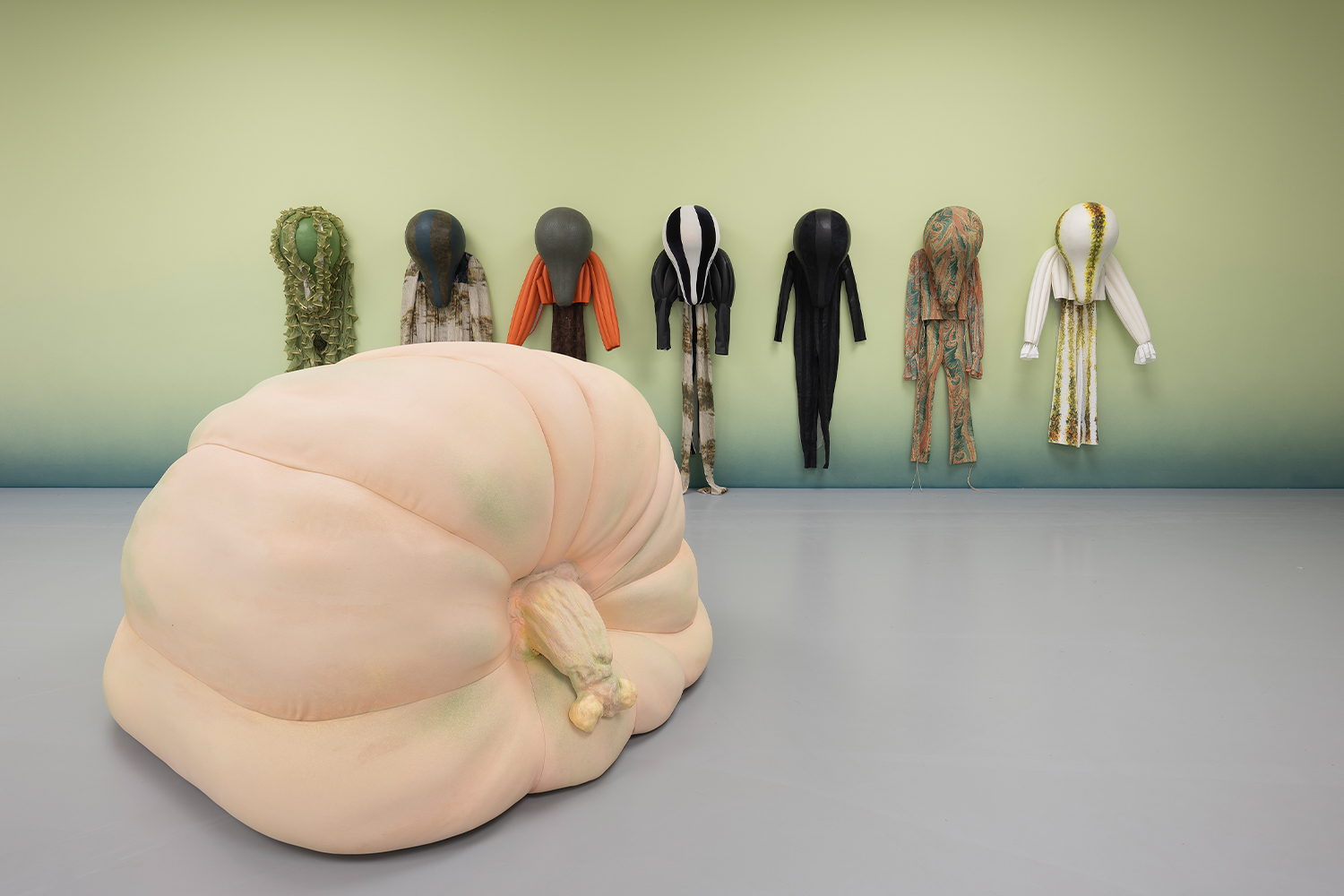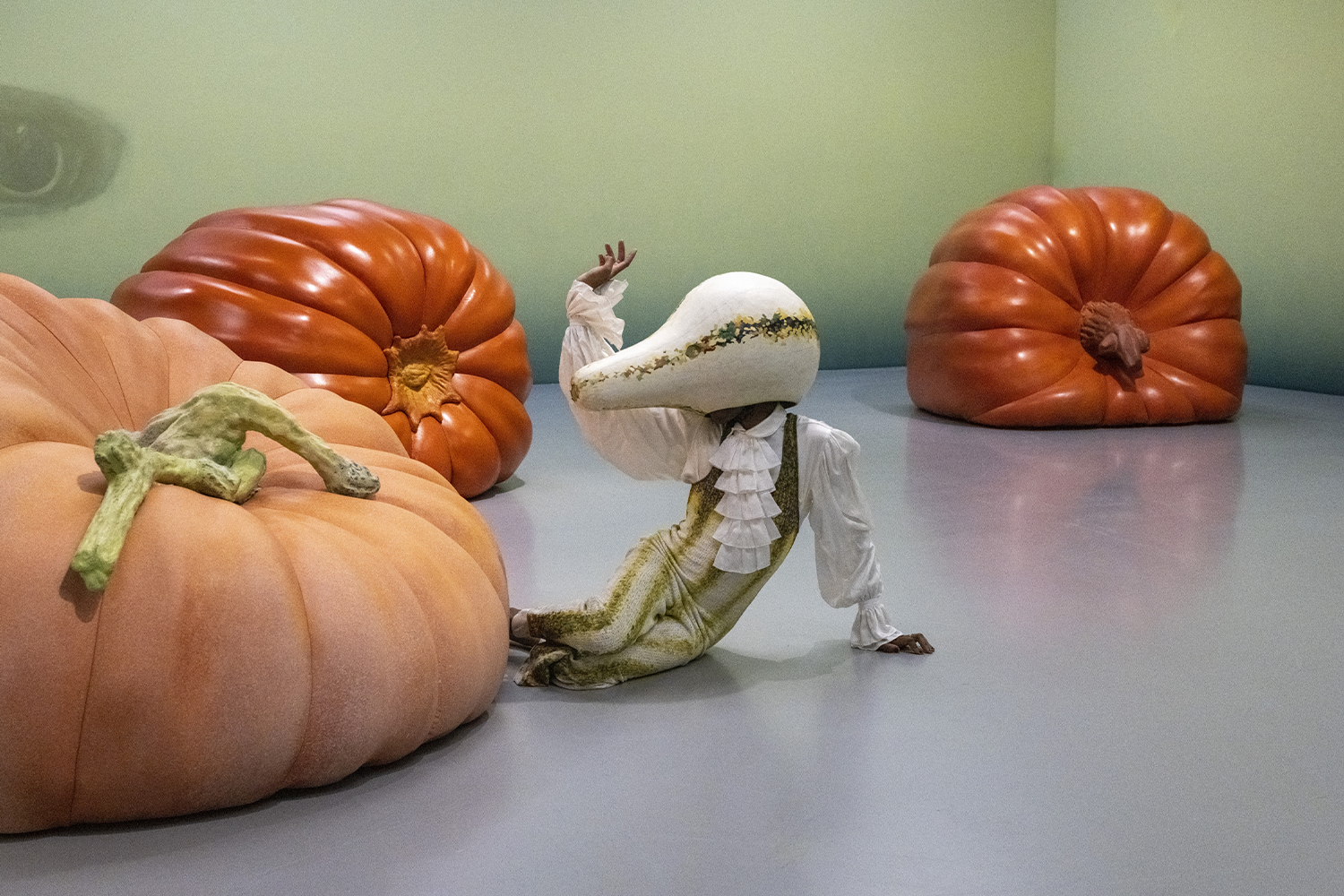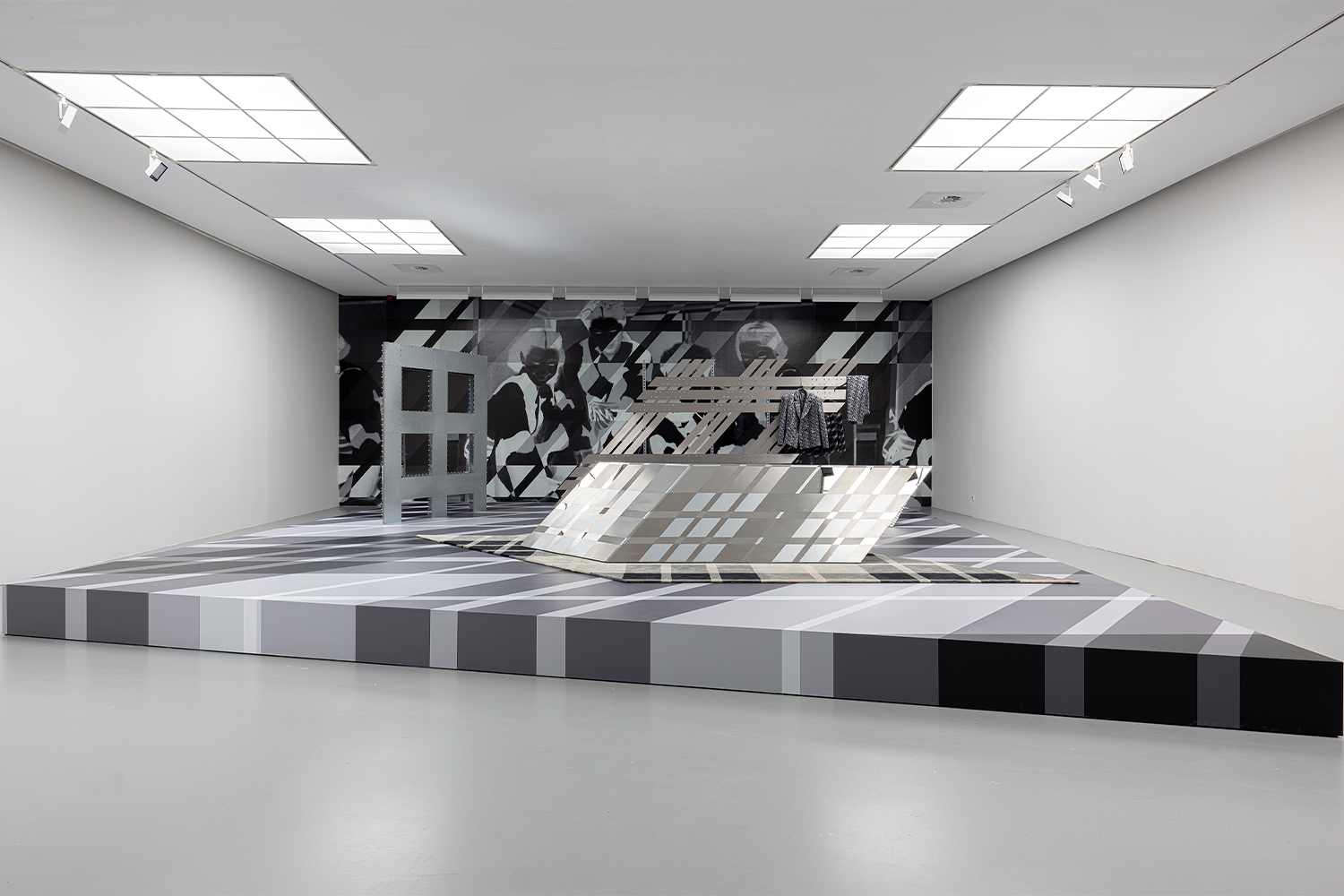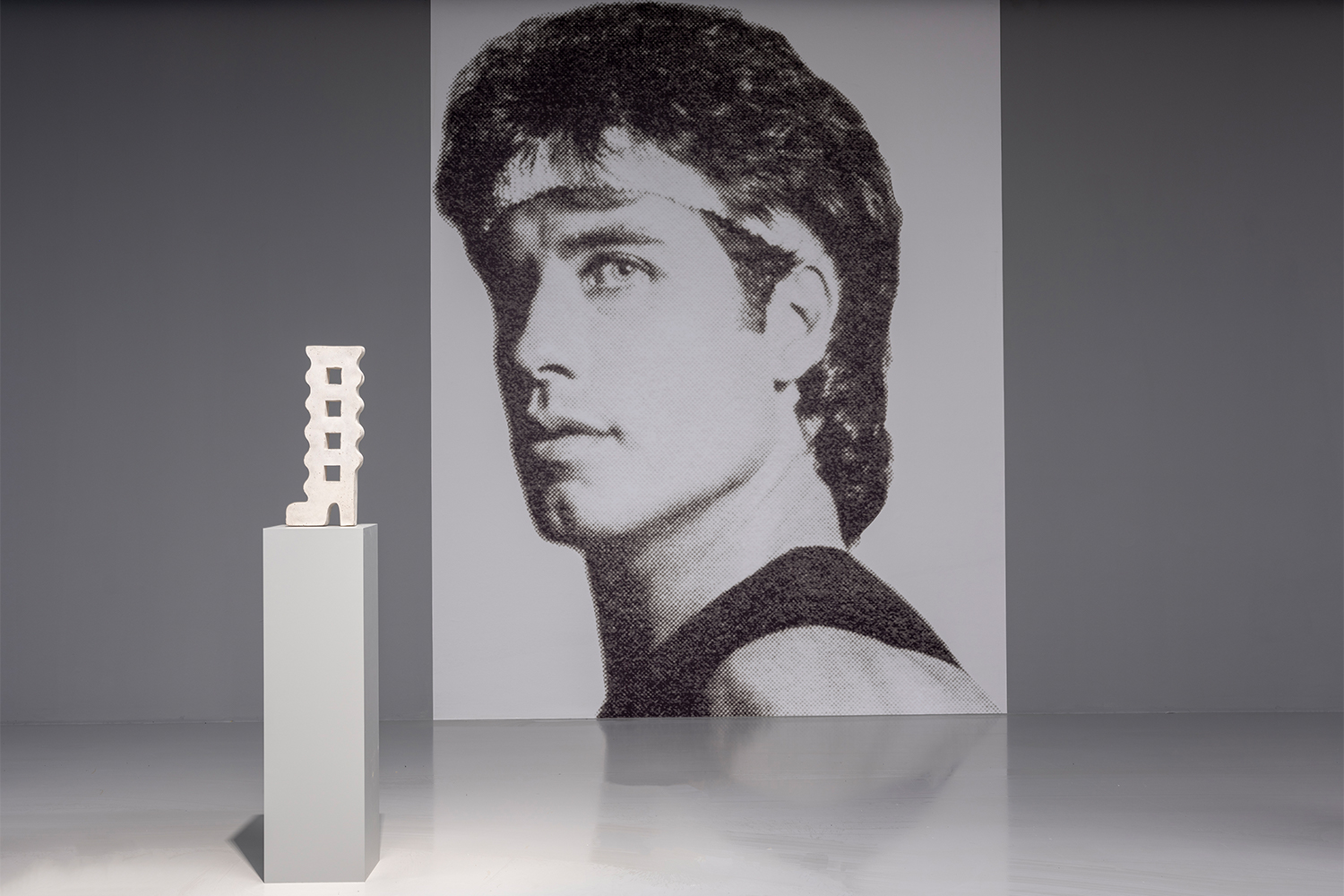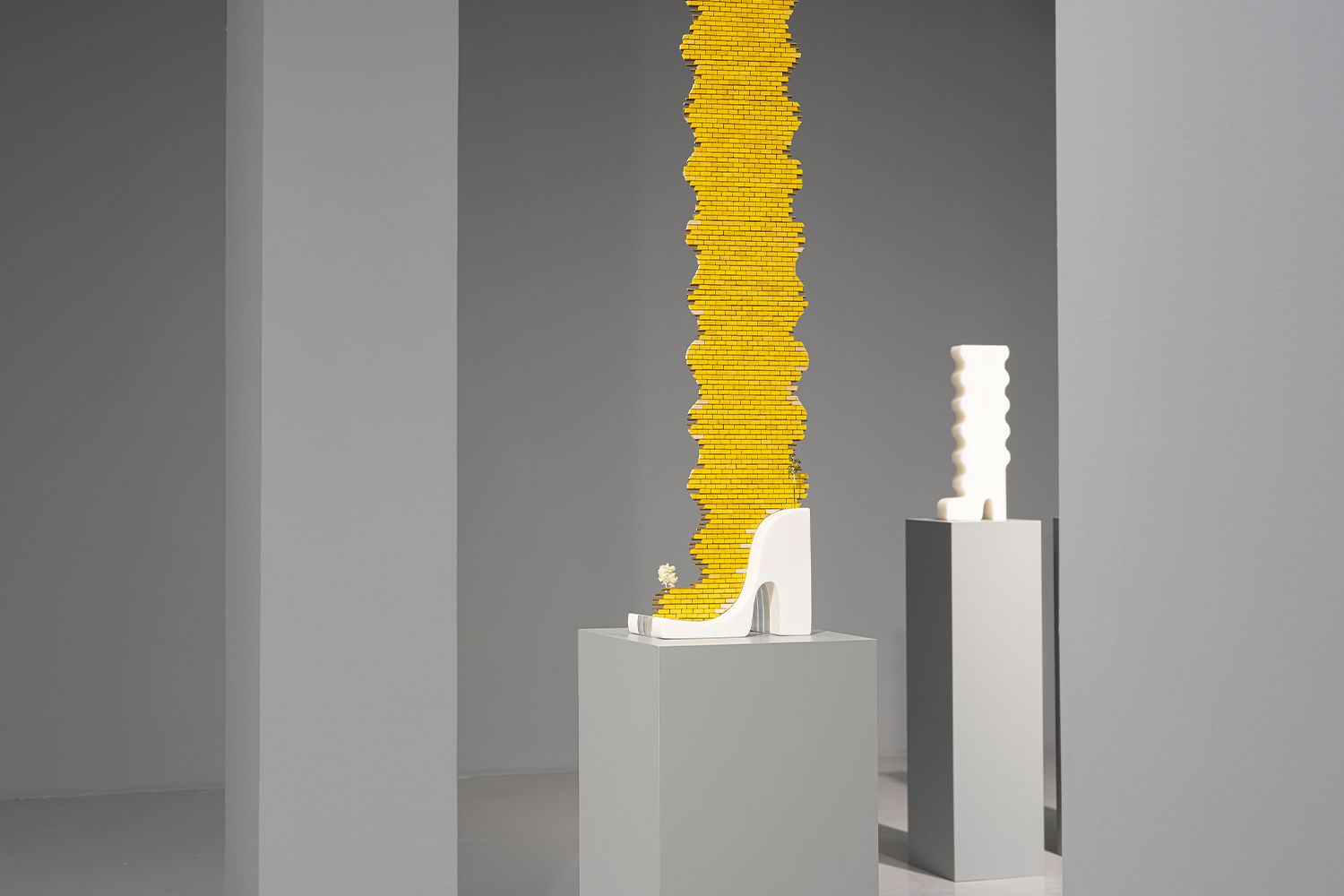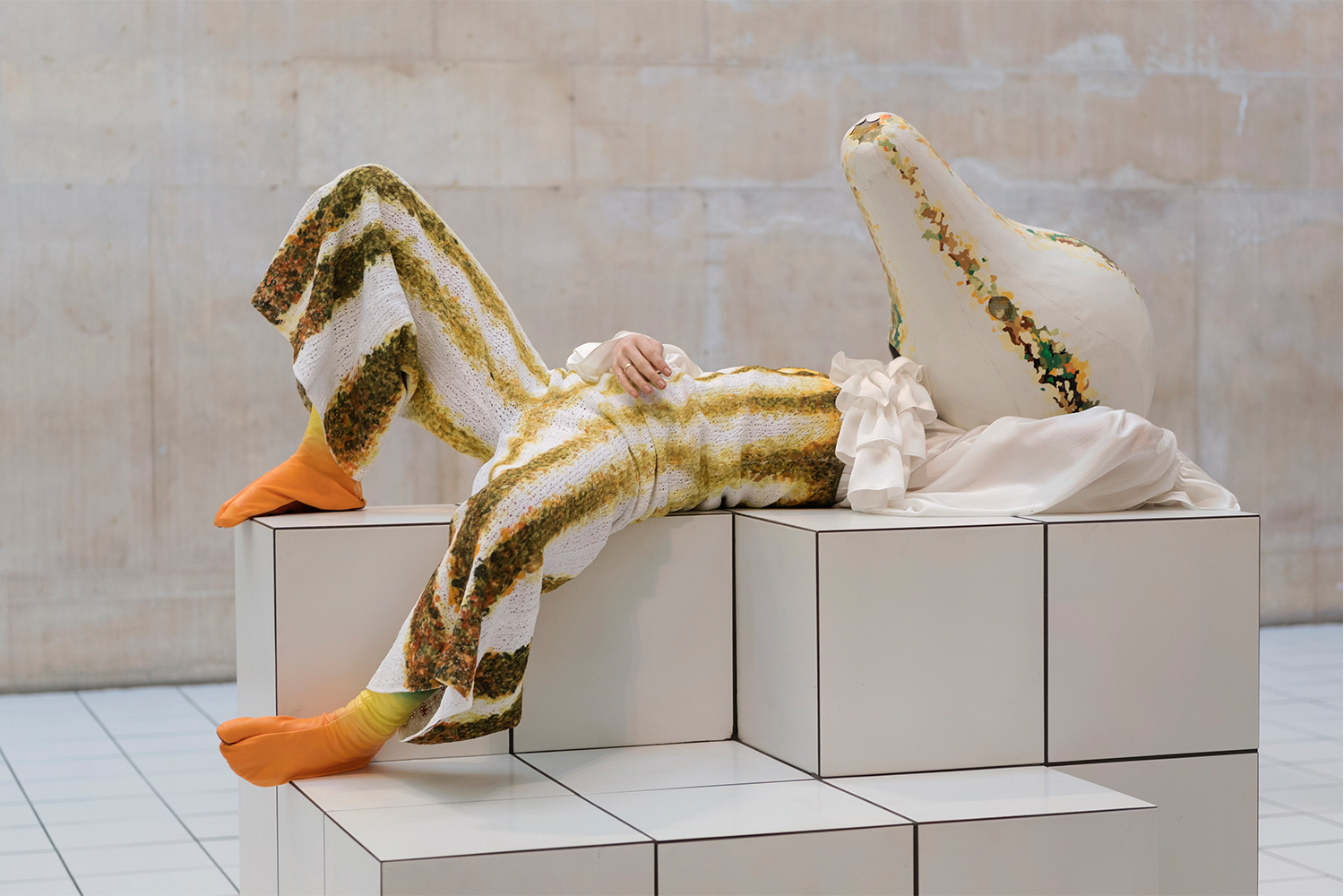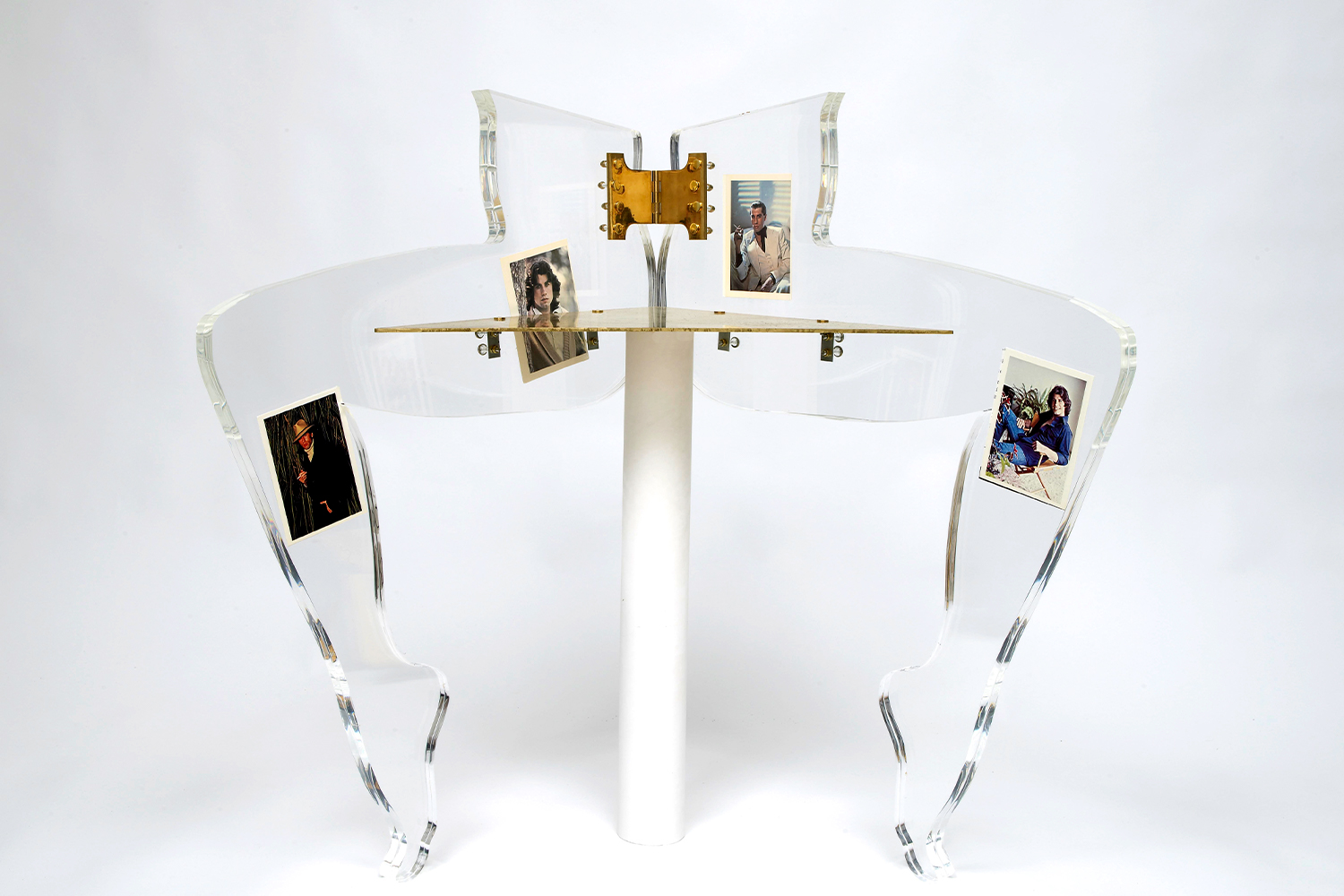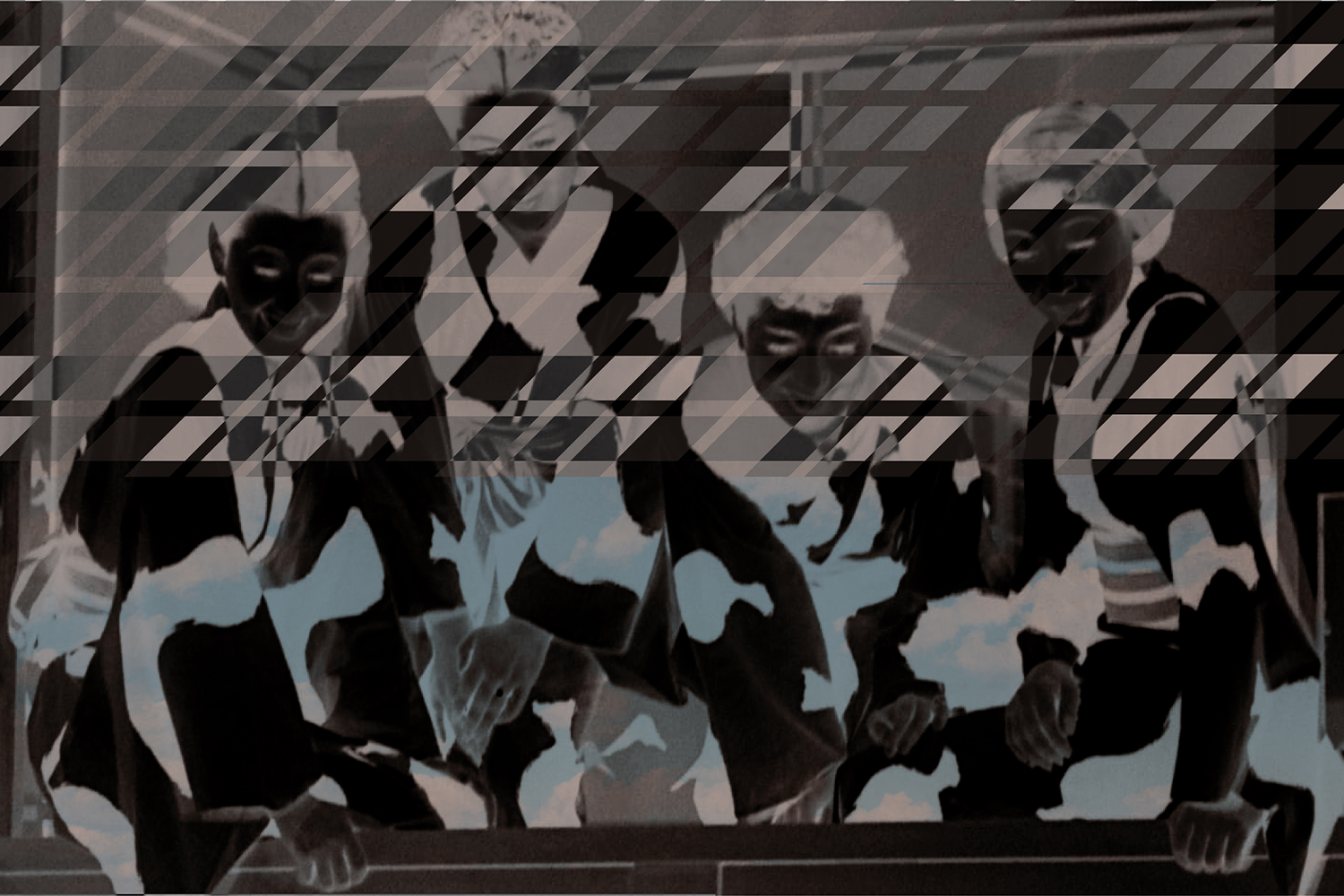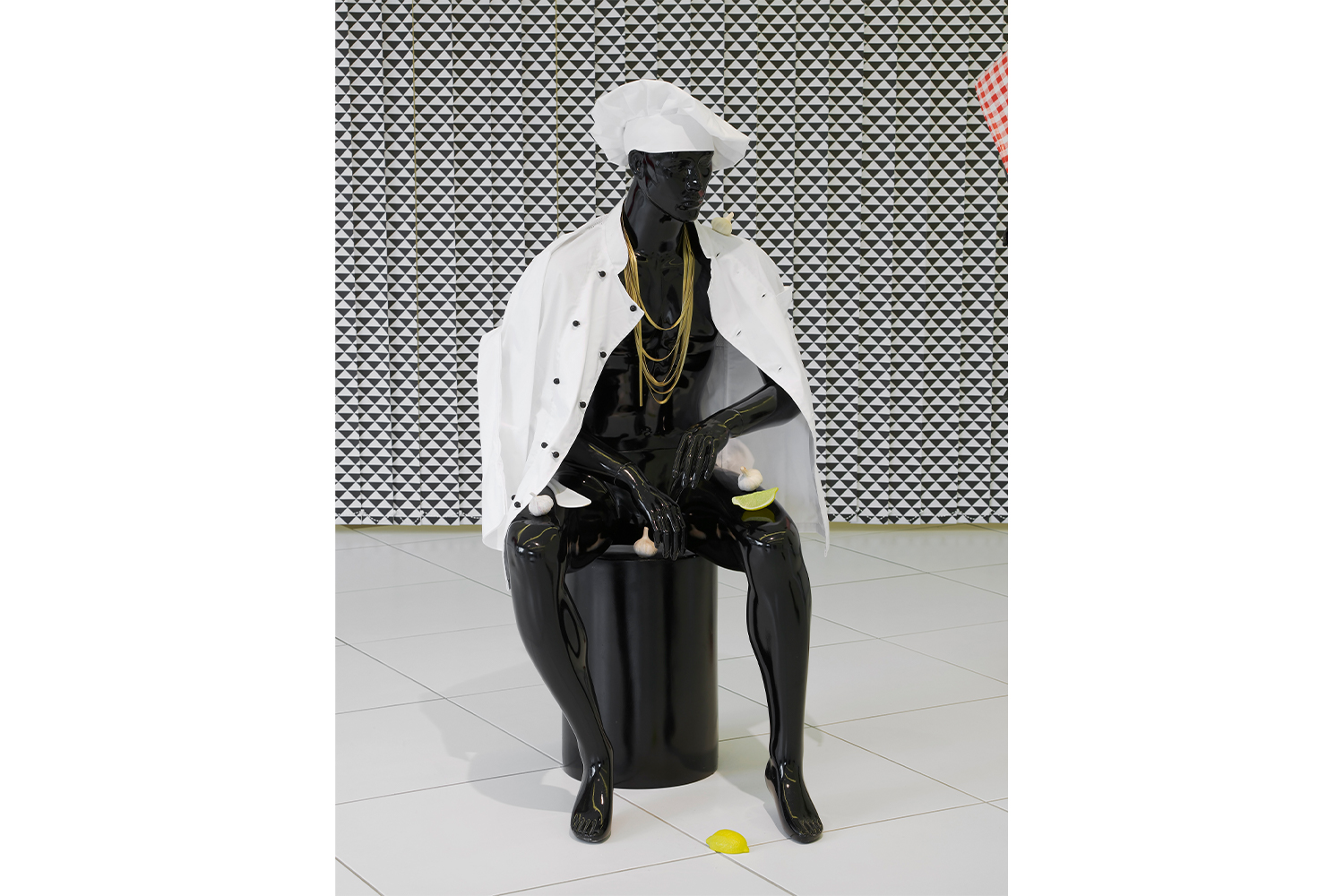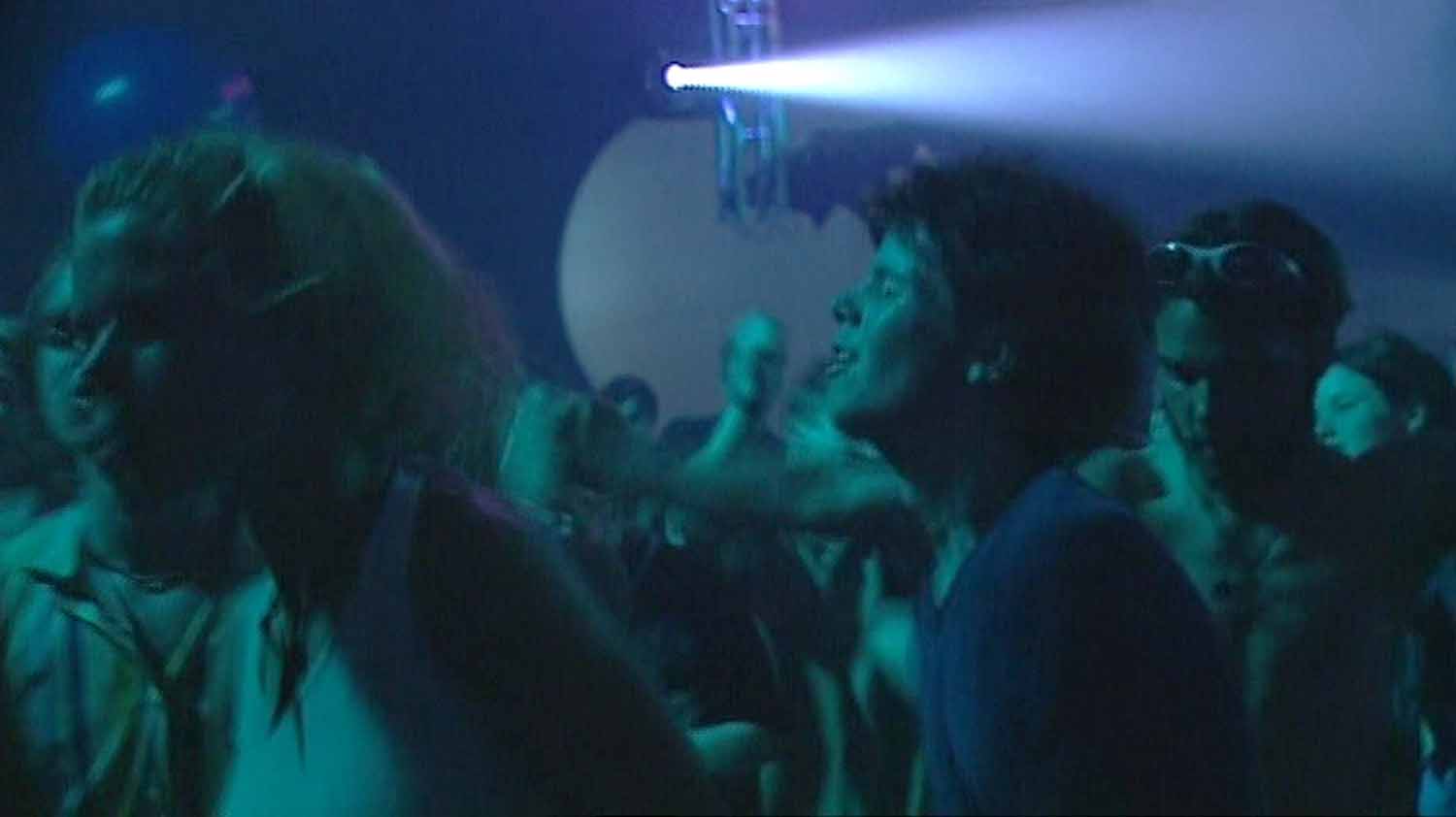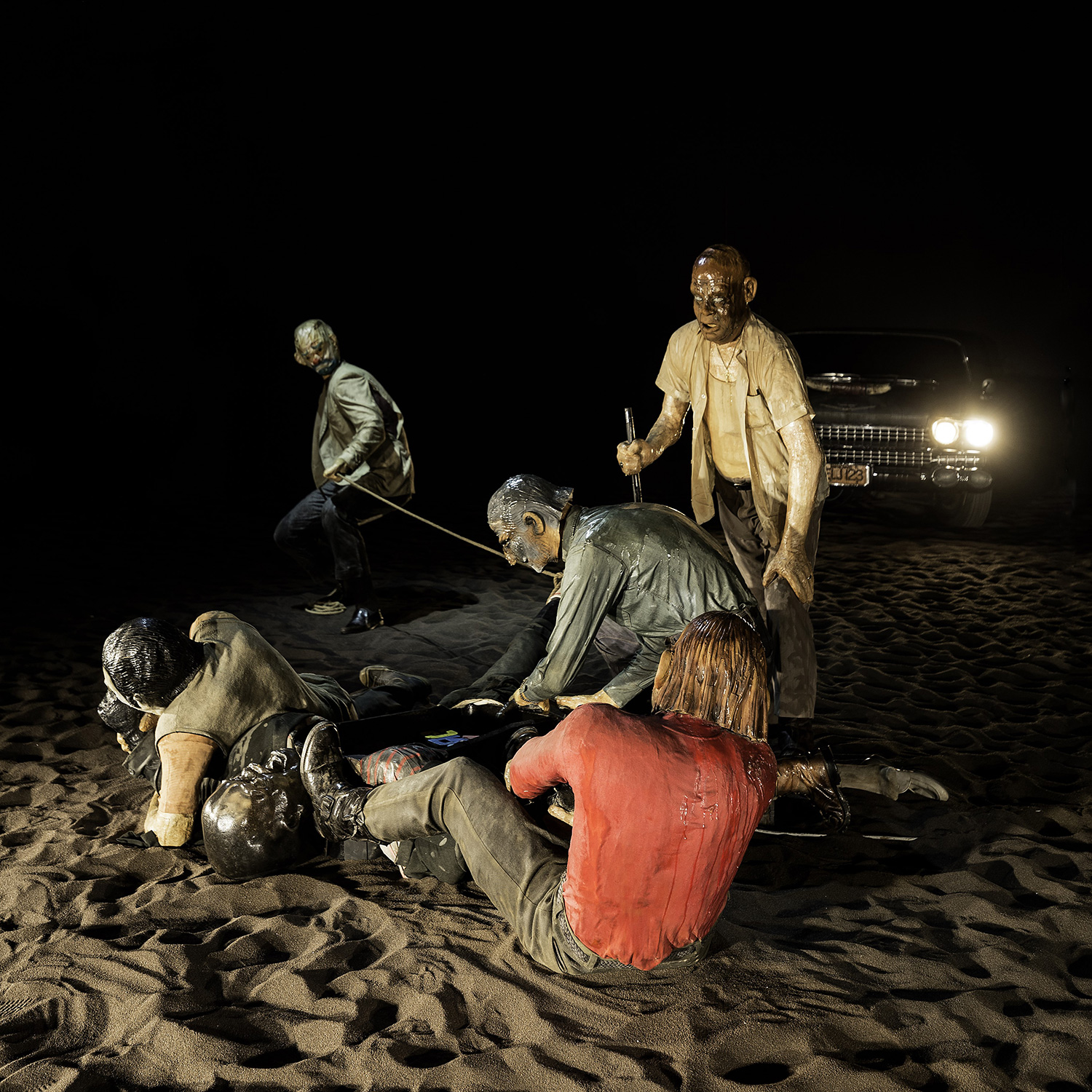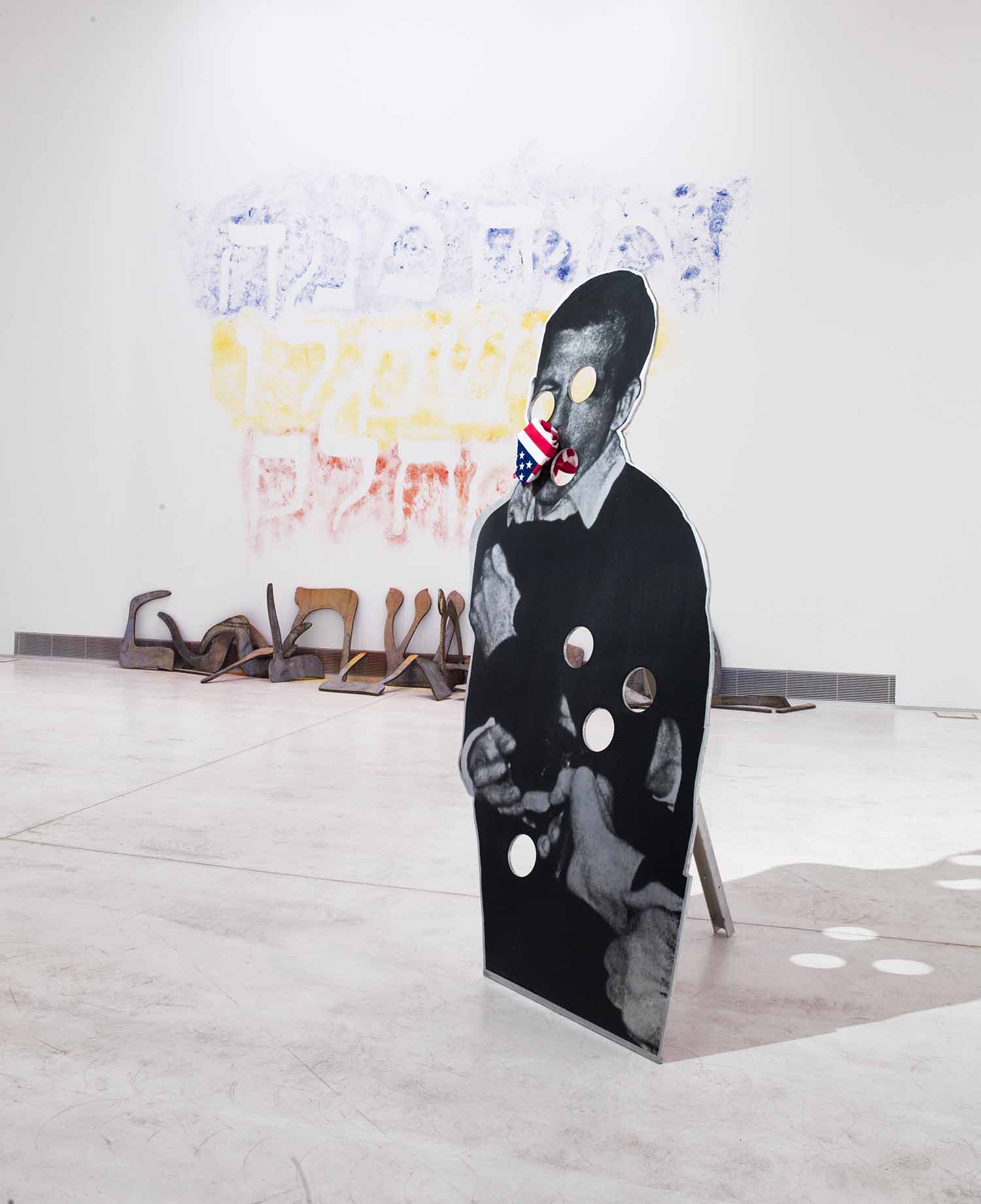“Mash Up” is the first major survey exhibition of works by Anthea Hamilton, and is therefore the first opportunity to share an in-depth reading and articulation of the artist’s practice, whilst also opening up new perspectives and interpretations. The exhibition comprises no less than seventy works created by the artist throughout her career, alongside a series of new works, a performance, and exhibition-specific situations. While a survey, Mash Up was a dynamic and creative process, allowing space and time to reframe, juxtapose works and assess the artist’s practice.
As such, “Mash Up” acknowledges the quality of Hamilton’s early works as vectors of her foundational concerns and methods, taps into and reframes iconic past installations, and supports the development of new obsessions. These empirical associations between old and new works therefore testify to Hamilton’s singular approach to temporality: she embarks upon excursions into the past, present and future at varying speeds ranging from an instantaneous snap of the fingers to the slow passing of time associated with static sculptures.
“Mash Up” meanders through M HKA’s hard to grasp gallery spaces, interacting with the building’s architecture that lies somewhere between monumental atrium and traditional white cube. The rooms—considered as a non-linear spatiotemporal sequence—form a hybrid body which the visitor is invited to discover, in no particular order, obeying not one defined trajectory or experience of the exhibition.
An initial grey zone welcomes the visitors’ first steps: in this large space dominated by classical sculptural forms and images, viewers can sit or “hang out”, answering the works’ explicit demands to be looked at and appreciated. The bold representation at play here seems slightly exhausted, paralleling a slow process in Anthea Hamilton’s work where a previous belief in iconicity has become outdated within contemporary culture. Beyond their brazen and recognisable appearance, all of the figures presented here carry a set of ambiguities and vulnerabilities dialoguing with their sometimes unbreakable status.
At one end of the exhibition galleries sits a white space with large bay windows. Flirting with the aesthetics of the Hip Hop Mansion, the room is elegant and classic, containing several works that deal with the ideas of self-identification, self- portrait and personal aspirations. Despite generating a semblance of a domestic interior, the display does not feel lived-in or liveable as it expresses a sense of off- key impracticality.
The middle, executive room performs under the terms of a disrupted binary logic: the black and white theatre set of what might be a CEO’s private office is slanted and marked by the repetition of the Hamilton tartan, used according to its original purpose—as a signature or sign of belonging. Faithful to managerial standards, the room is equipped with highly stylized furniture: an executive desk, a rug, shelves, a daybed, some belongings, and a suit. A wallpaper depicting four women looking down on the scene demands an answer to the mystery of what an executive might perform in this exclusive space. In addition to this theatrical scene, Hamilton has defined moments during the day when the lights of the whole exhibition are turned off for a few minutes, interrupting the daily routine and revealing a glow in the dark version of the exhibition. This micro-event offers viewers a calmer and more shady experience compared to the regular conditions set for the presentation of artworks and insists upon the parallel existence of real life and constructed reality within Anthea Hamilton’s practice.
The opposite wing of the show is conceived as a garden, becoming part of Hamilton’s ongoing practice of looking at nature and organics in her work. It seems the summer has passed and early autumn is creeping into the room with objects showing signs of overripening and decay. Displayed in this area are both freshly contextualised reminiscences of past works: costumes, garments, and sculptures that were previously used as props or canvases for ideas, as well as new pieces that were conceived expressly for Mash Up. Incidentally, Hamilton has awarded the most remarkable space of the gallery to the performers who will use the “fashion garden” as a point from which to depart before embarking upon their exploration of the whole exhibition, sloughing their skins and identities as they go.
In its entirety, “Mash Up” sheds light on Hamilton’s acute capacity to sense and expose within both public and intimate spheres the otherwise unseen movements and shifts of the symbols that surround and shape us, as well as the immovable or stagnant codes and clichés we unknowingly perpetuate. Her idiosyncratic ecosystem-as-artistic-practice—where adroitly-sourced organisms and influences cohabit and contaminate one another—extends an invitation to viewers to assess their knowledge of forms and images, all the while raising relevant questions on representation, methodologies of freedom, and identity politics.

